Carl Max Lindner, Sr.
1928
503 Stuart Circle
Richmond is often characterized by its strict grid plan. But among the pleasures of the Fan District are the street intersections where acute angles are formed by the juncture of many east-west streets as they extend from Monroe Park. Additional design opportunities occur at the intersections along Monument Avenue where statues commemorate notable southerners.
Anchoring the northeastern corner of Stuart Circle, overlooking the Gen. J.E.B. Stuart monument, is St. John’s United Church of Christ. The city has few more urbane architectural moments. The highly talented Carl Max Lindner, Sr. created a grand, Gothic Revival sanctuary in limestone which is complemented by a bell tower, cloistered loggia and church school building that are constructed in different materials to achieve an overall look to the complex as if it was built over time. The lower two-thirds of the tower, for instance, is faced in raw, blonde brick.
The congregation had previously worshipped in Jackson Ward where it had been organized by German immigrants in 1843. A second church was built at Eighth and Marshall streets in the early 1870s. But St. John’s became one of half a dozen Richmond congregations that, in the early 20th century, followed its flock in the residential development of the Fan and Monument Avenue districts.
On the sanctuary interior Lindner uses a English adaptation of Gothic architecture with a vaulted ceiling and a modified arch that allows for greater width and more natural daylight. The altar itself was hand-carved in Oberammergau, Germany. The leaf and fruit cluster motifs of the band encircling the alter repeats on the reredos which rises behind the altar.
The stained glass windows in the sanctuary nave had previously been installed in the former church. All of these memorial windows carry German inscriptions, the language used almost exclusively by the congregation until the early 1900s. The smaller aisle windows were added later, beginning in 1948.
Stuart Circle is a remarkable urban space. The leafy median strip of Monument Avenue extends westward and the Stuart Court Apartments, First English Lutheran Church, the 1000 Monument apartments and St. John’s join to create a streetscape of architectural authority and elegance.
E.S.
Photographs: D.OK.





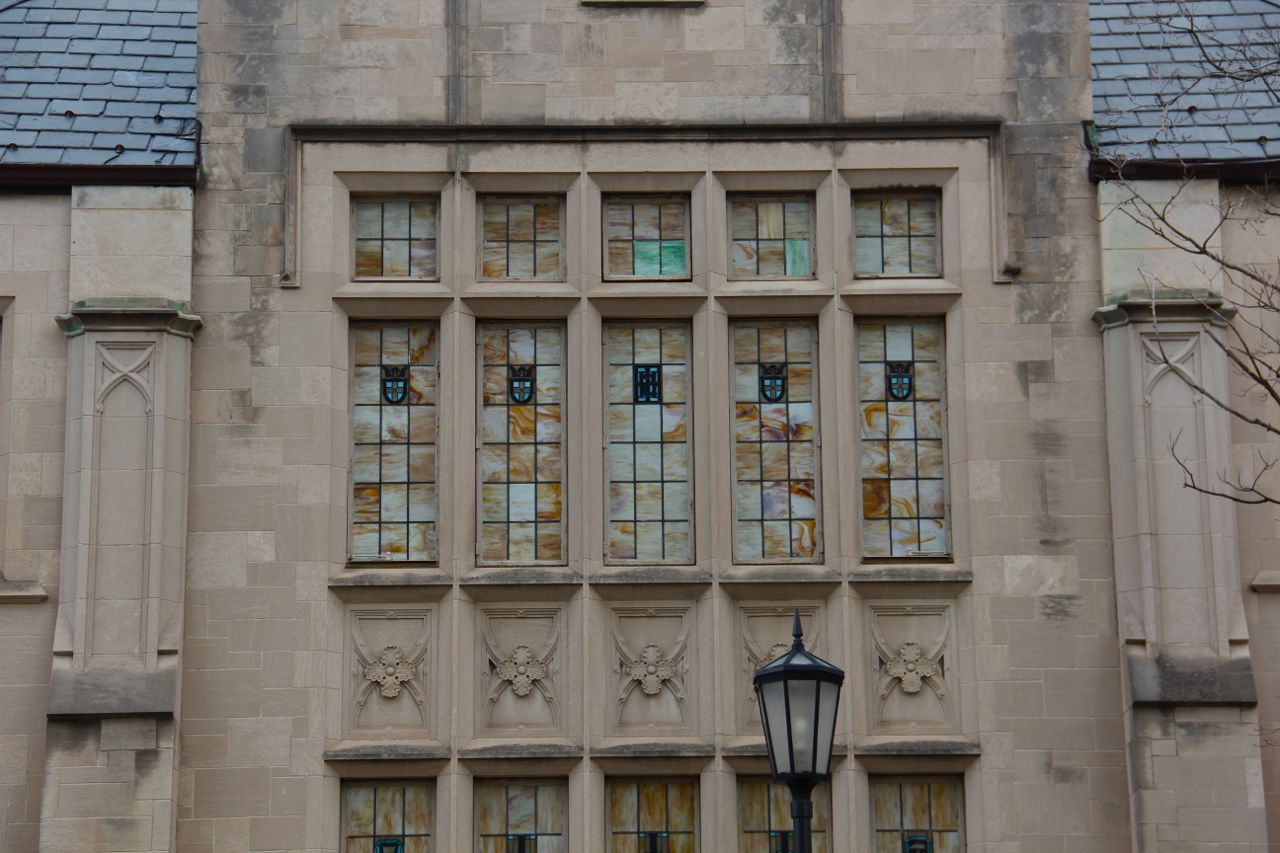

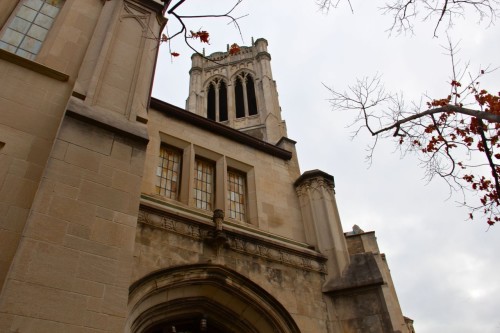
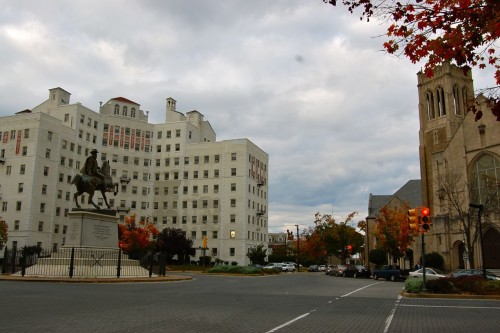


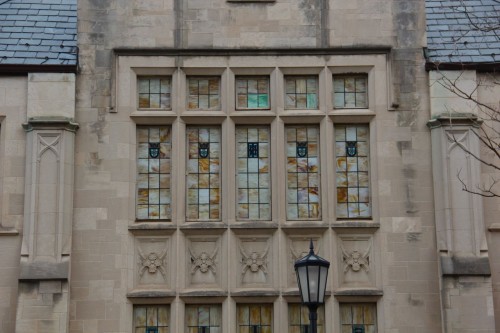
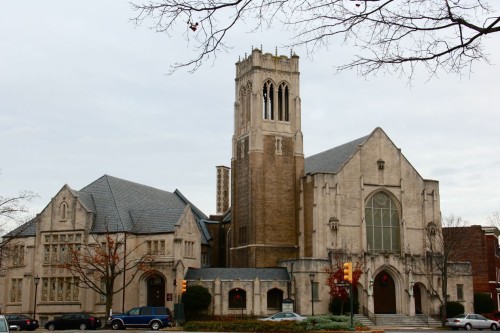
Write a Comment